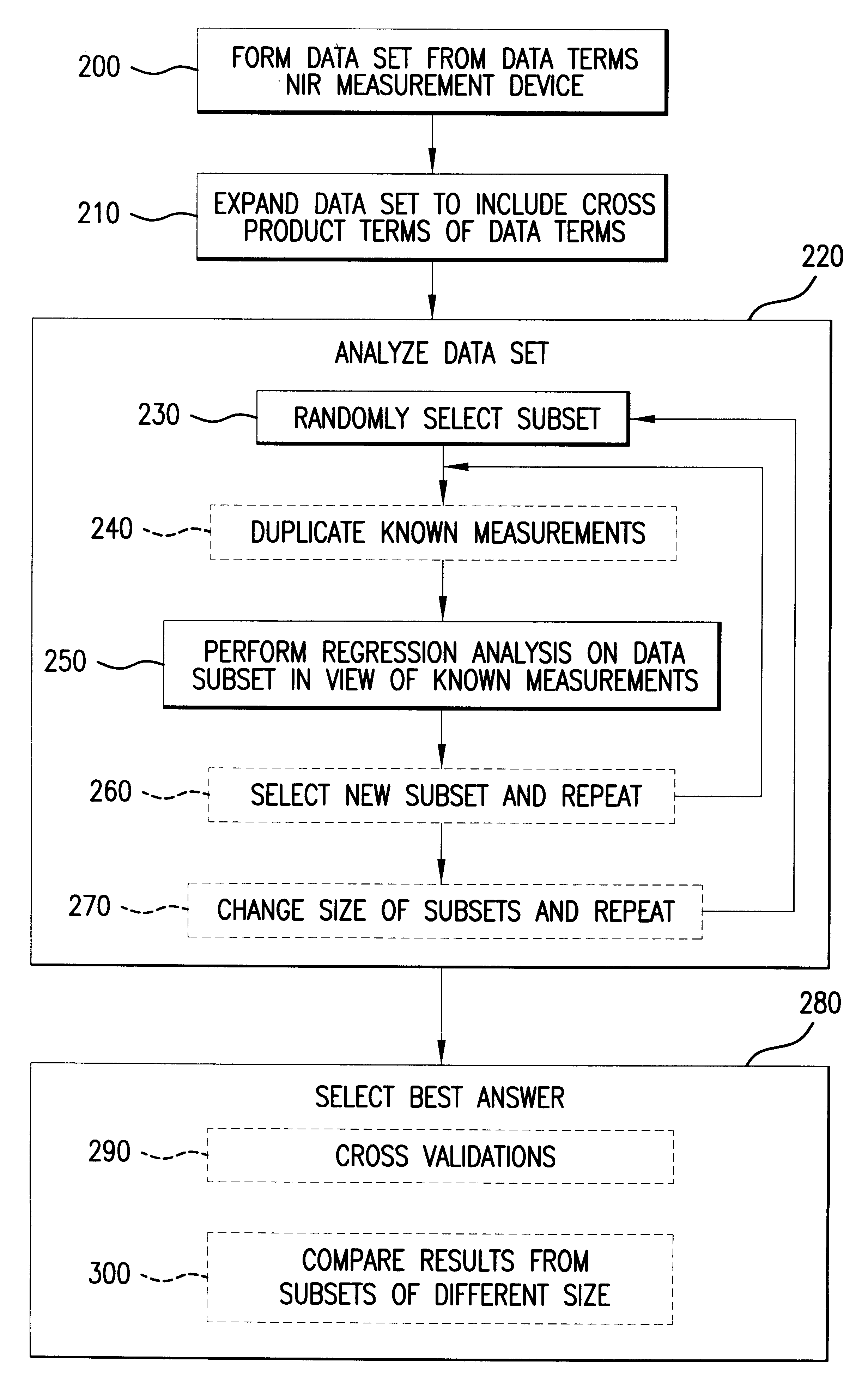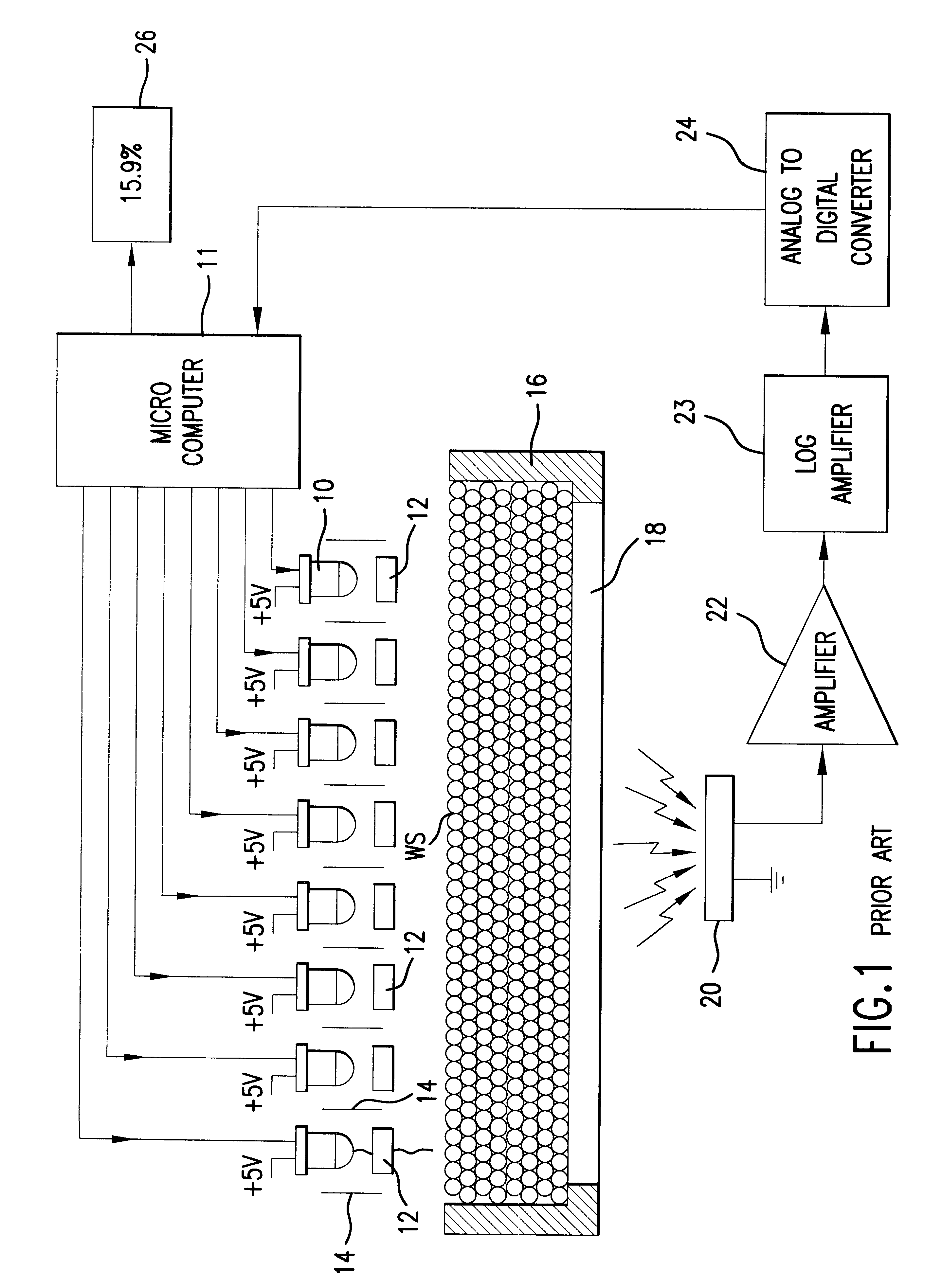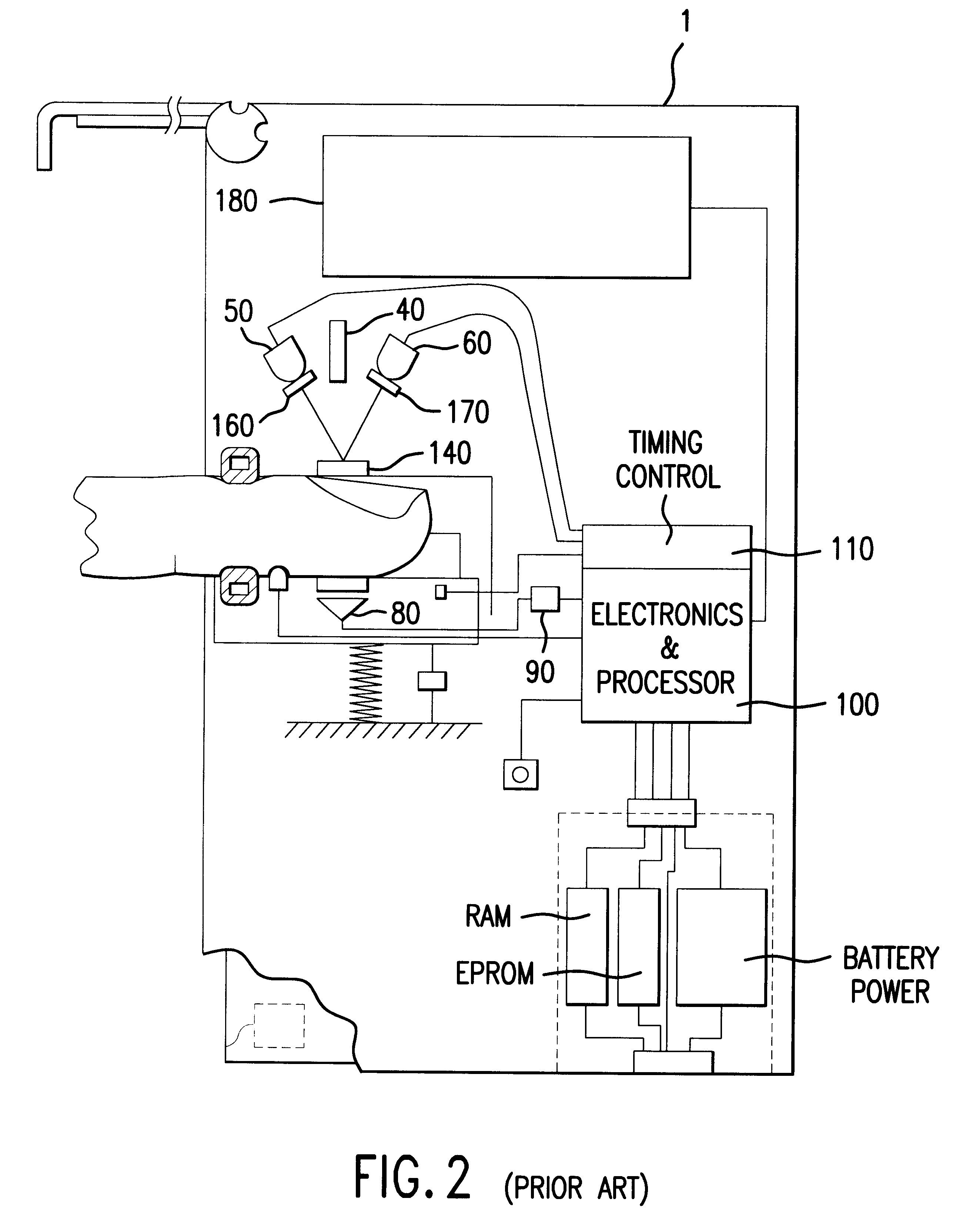Calibration of near infrared quantitative measurement device using optical measurement cross-products
a technology of optical measurement and measurement device, applied in the field of calibration of near infrared quantitative measurement device using optical measurement cross-product, can solve the problems of insufficient accuracy of conventional multiple linear regression or factor analysis to be meaningful, tedious and time-consuming to accurately calibrate the nir measurement device,
- Summary
- Abstract
- Description
- Claims
- Application Information
AI Technical Summary
Problems solved by technology
Method used
Image
Examples
Embodiment Construction
FIG. 4 illustrates a calibration performed on a diabetic individual for blood glucose measurement with an NIR device that uses the fourteen wavelengths. Using first order terms from the fourteen basic wavelengths provided a cross validation correlation of 0.710, bar A in FIG. 4. As illustrated in the next bar, B, using the combination of first and second order terms provided a cross validation correlation of 0.806. The next bar to the right, C illustrates the result of using the combination of first, second and third order terms and provides an improved result of 0.816. The use of nonoptical data terms, along with the combination of first, second and third order optical terms, improved cross validation correlation to 0.898, column F.
FIG. 5 illustrates the effect of adjusting the number of variable terms used, as shown by the standard error of the calibration and the standard error of cross validation. The key parameter is the standard error of cross validation because it is a measur...
PUM
| Property | Measurement | Unit |
|---|---|---|
| wavelengths | aaaaa | aaaaa |
| NIR | aaaaa | aaaaa |
| optical measurement | aaaaa | aaaaa |
Abstract
Description
Claims
Application Information
 Login to View More
Login to View More - R&D
- Intellectual Property
- Life Sciences
- Materials
- Tech Scout
- Unparalleled Data Quality
- Higher Quality Content
- 60% Fewer Hallucinations
Browse by: Latest US Patents, China's latest patents, Technical Efficacy Thesaurus, Application Domain, Technology Topic, Popular Technical Reports.
© 2025 PatSnap. All rights reserved.Legal|Privacy policy|Modern Slavery Act Transparency Statement|Sitemap|About US| Contact US: help@patsnap.com



